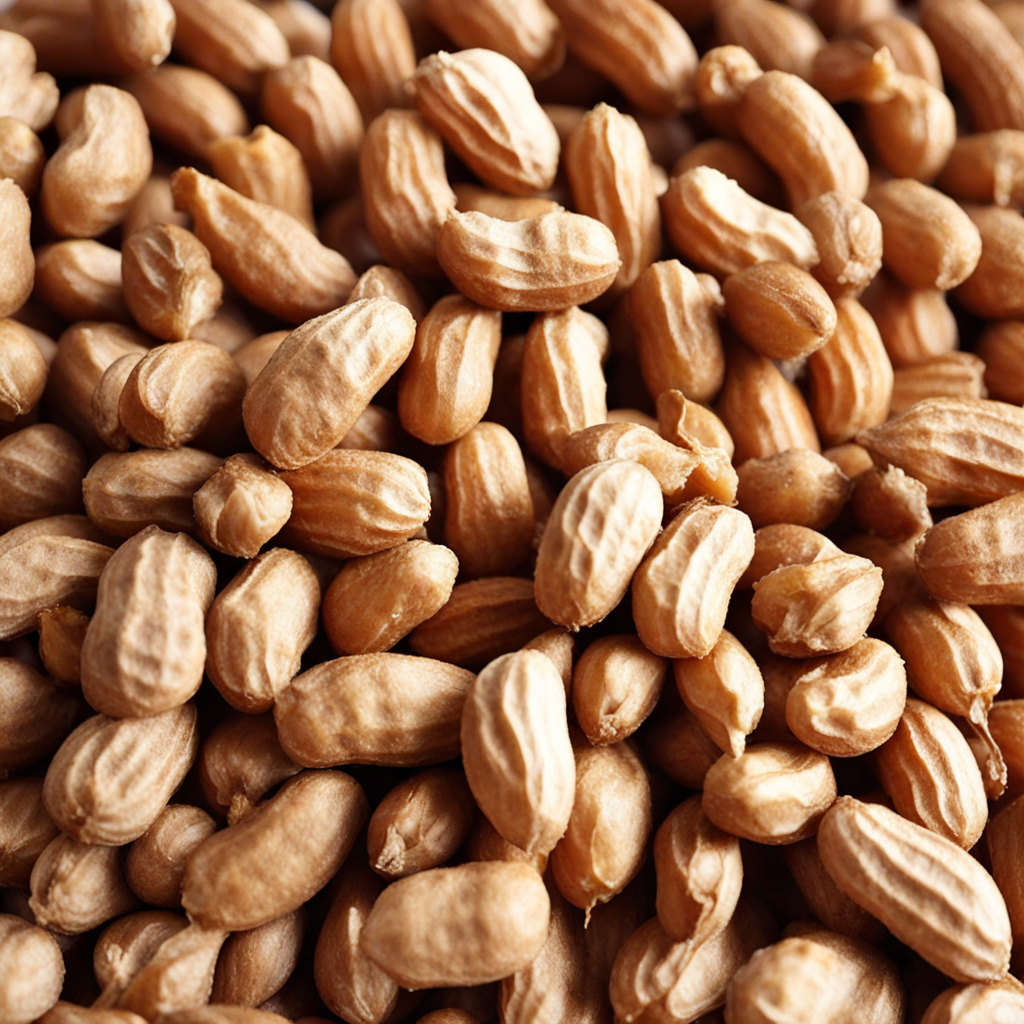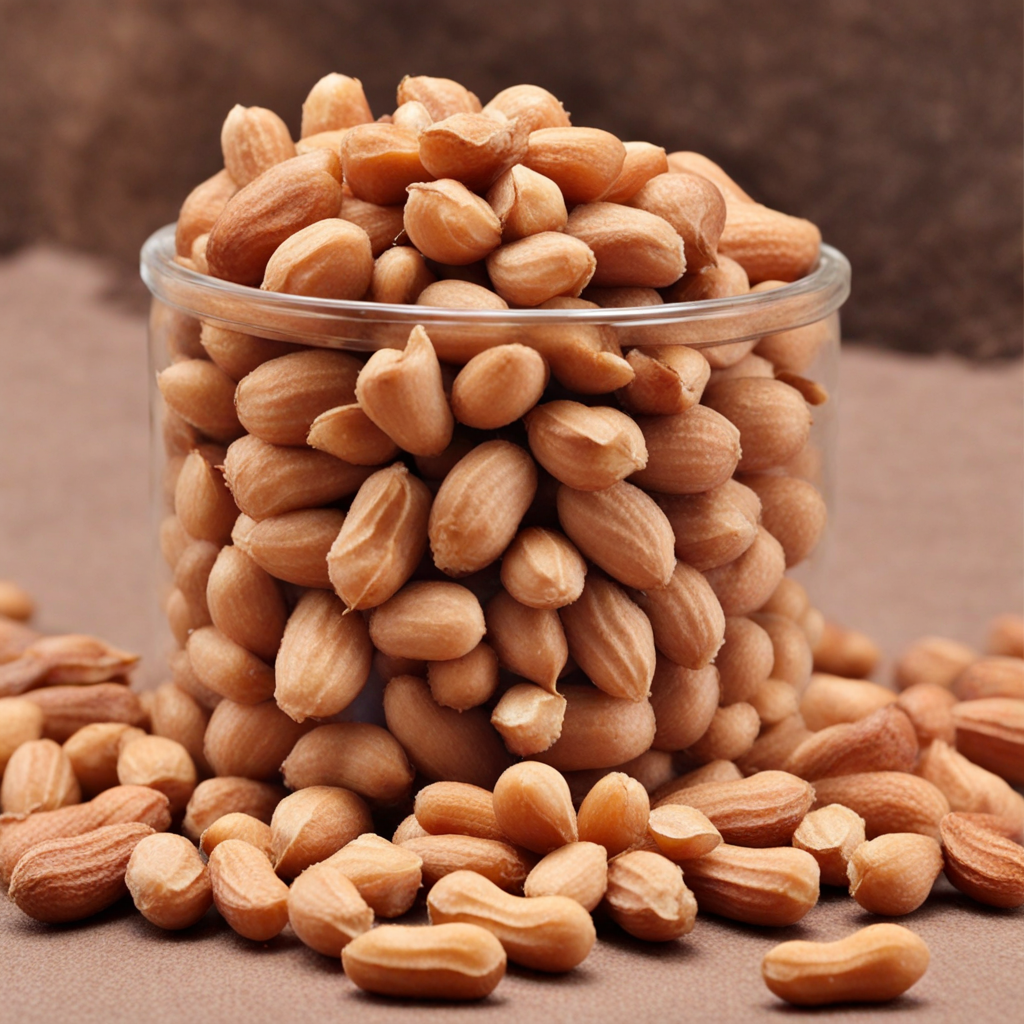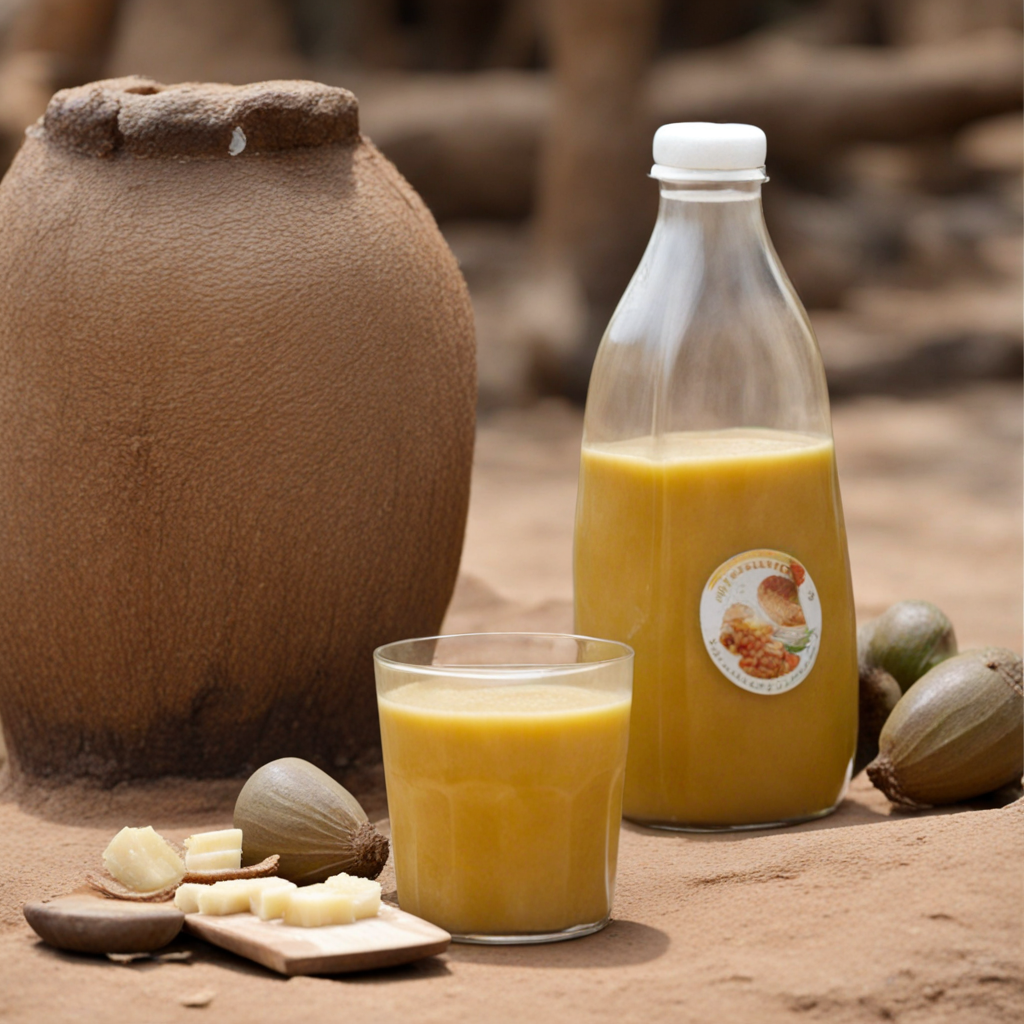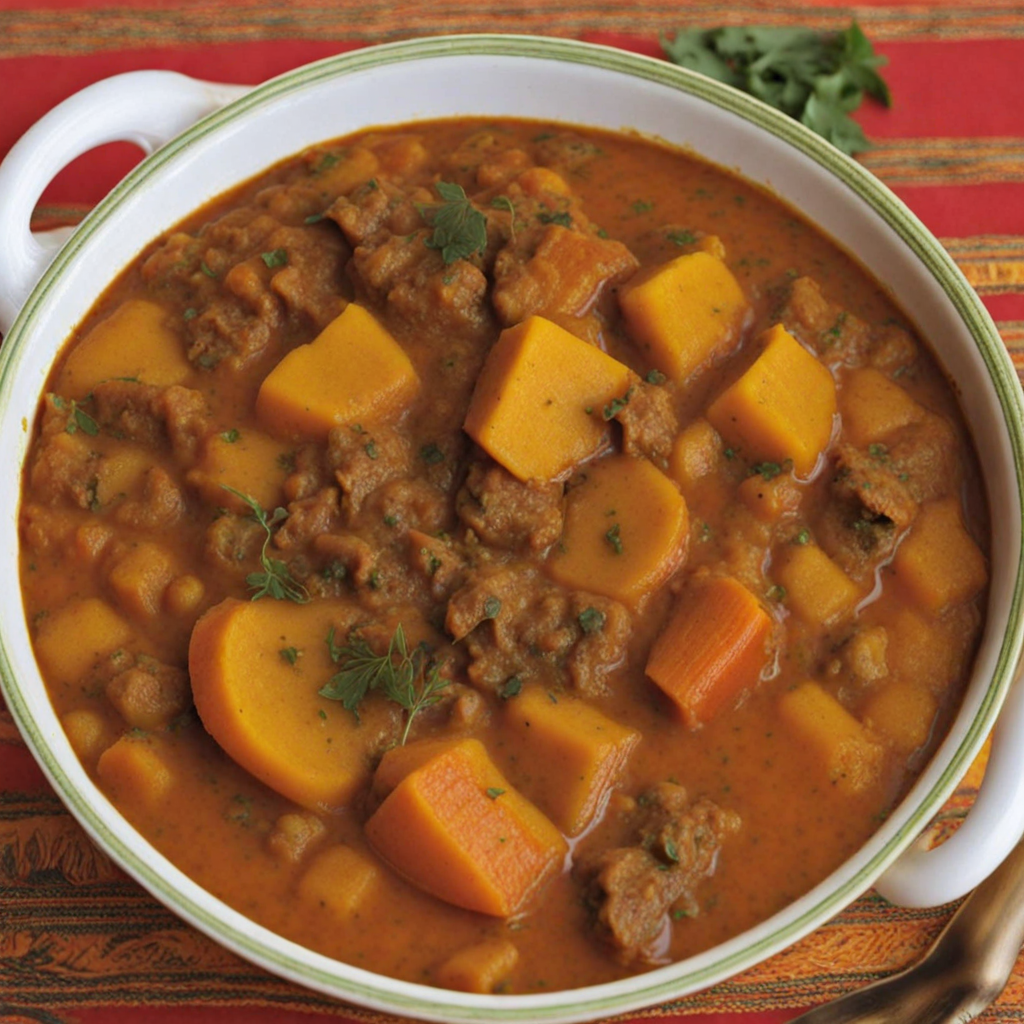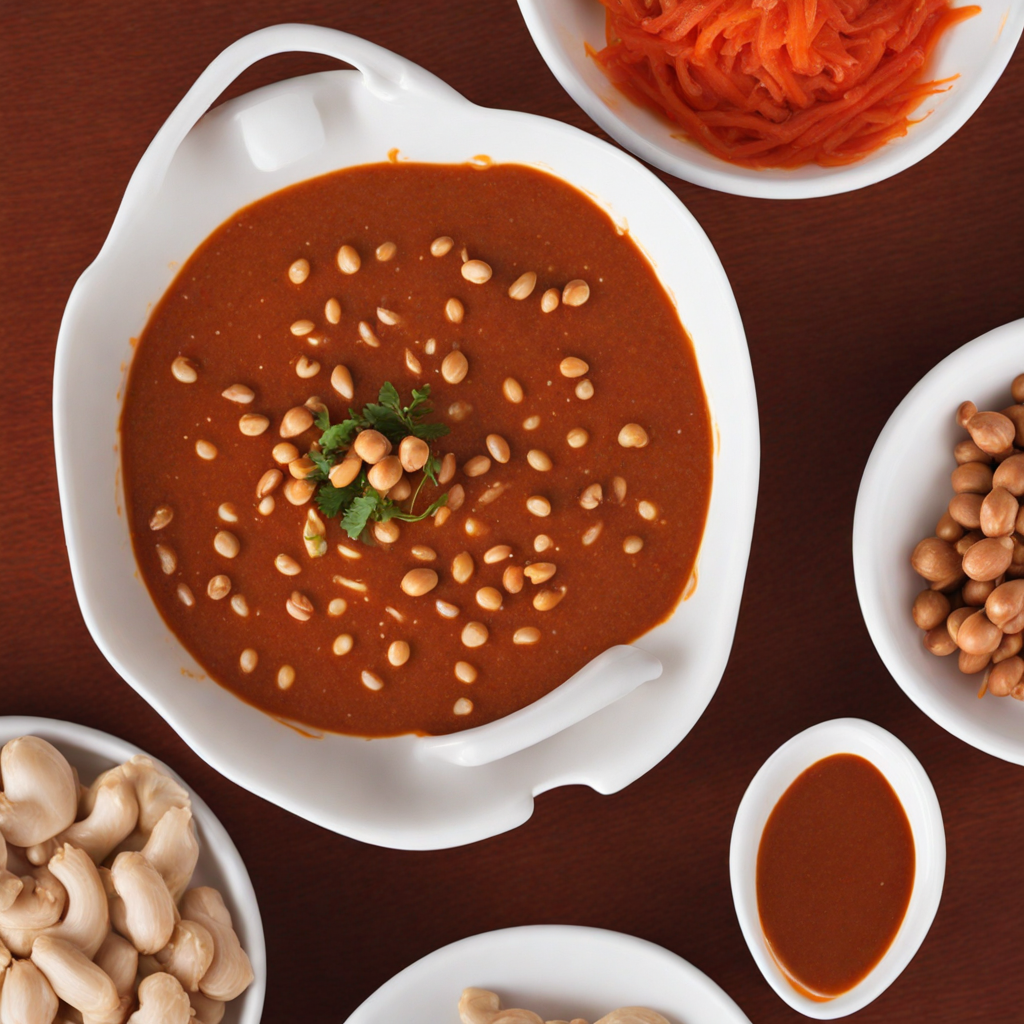Roasted Peanuts
Roasted peanuts, a beloved snack in Niger, offer a delightful crunch that captivates the senses. The process begins with high-quality, raw peanuts that are carefully roasted to achieve a golden-brown hue. The roasting enhances their natural nuttiness, creating an aromatic experience that wafts through the air. Each bite delivers a satisfying crunch, followed by a buttery flavor that is both rich and comforting, making them a perfect companion for casual gatherings or a delicious solo treat. In Niger, roasted peanuts are often enjoyed as a street food snack, served warm and sometimes sprinkled with a hint of salt or spices for an extra layer of flavor. The simplicity of the preparation allows the peanuts’ inherent taste to shine, while the optional seasonings add an exciting twist for those looking to explore new flavors. They are also commonly used in local dishes, providing a protein-rich ingredient that enhances the overall nutritional profile of meals. Beyond their delightful taste and texture, roasted peanuts from Niger are steeped in cultural significance, often associated with conviviality and shared moments among friends and family. They embody the spirit of communal eating, where people come together to enjoy the simple pleasure of good food. Whether enjoyed on their own or incorporated into traditional recipes, roasted peanuts are a testament to Niger's rich culinary heritage, inviting food lovers to savor the warmth and hospitality that each bite encapsulates.
How It Became This Dish
Cacahuètes Rôties: The Toasted Peanut of Niger #### Origins: The Journey of the Peanut Cacahuètes rôties, or toasted peanuts, have a rich and multifaceted history that intertwines with the agricultural practices and culinary traditions of Niger and the broader West African region. The peanut, known scientifically as *Arachis hypogaea*, is believed to have originated in South America. Archaeological evidence suggests that peanuts were domesticated in the valleys of Paraguay and Bolivia around 3,500 years ago. From there, the legume made its way to Africa, likely through the transatlantic trade routes established during the Age of Exploration in the 16th century. By the time peanuts reached West Africa, they had already undergone significant cultivation and adaptation. The unique climate and soil conditions of the region proved conducive to peanut farming, allowing it to flourish. In Niger, as in many parts of West Africa, peanuts became a staple crop due to their nutritional value and versatility. They are high in protein, healthy fats, and essential vitamins, making them an important food source in diets that often lack adequate protein. #### Cultural Significance in Niger In Niger, cacahuètes rôties serve not only as a popular snack but also as an integral part of the social and cultural fabric. The act of toasting peanuts is often a communal activity, bringing together families and friends. Streets in cities and villages alike are often lined with vendors who sell freshly roasted peanuts, their warm, nutty aroma wafting through the air and drawing in passersby. This makes cacahuètes rôties not just a food item, but a cultural event—a point of gathering and sharing among the community. Peanuts also play a significant role in local rituals and traditions. They are often featured in celebrations and festivals, symbolizing prosperity and abundance. In some communities, peanuts are used in rituals to bless new homes or to celebrate major life events such as weddings and births. The simple act of sharing toasted peanuts can serve as a gesture of goodwill and hospitality, reinforcing social bonds. #### Development Over Time The history of cacahuètes rôties in Niger is closely tied to the evolution of agricultural practices and the economy. Traditionally, peanuts were cultivated by smallholder farmers using subsistence farming techniques. Families would plant peanuts alongside other crops, such as millet, sorghum, and cowpeas, in a practice known as intercropping. This method not only helped to maintain soil fertility but also provided a diverse diet, reducing dependency on any single crop. As Niger faced various climatic challenges, including drought and desertification, farmers began to adopt more resilient agricultural practices. The introduction of improved peanut varieties and sustainable farming techniques allowed for increased yields and enhanced food security. However, despite these advancements, many farmers still rely on traditional methods, emphasizing the importance of cultural heritage in agriculture. Over the years, the commercialization of peanuts has also transformed the landscape of peanut production in Niger. The government and various NGOs have promoted peanut cultivation as a viable cash crop, providing farmers with opportunities to sell their produce in local and international markets. This shift has led to the establishment of cooperatives that empower farmers by offering training, resources, and access to markets. As a result, cacahuètes rôties have gained popularity not just as a local delicacy but also as a sought-after commodity. Culinary Techniques and Variations Toasting peanuts is an art that varies from household to household, and the methods employed are as diverse as the cultural backgrounds of the people who prepare them. Traditionally, peanuts are roasted over an open flame or in a pan, with the goal of achieving the perfect balance of crunchiness and flavor. The toasting process brings out the rich, nutty aroma and enhances the taste, making the peanuts irresistible. In some regions, peanuts are seasoned with salt, while others may add spices or even sweeteners, creating a variety of flavors that cater to different palates. This adaptability speaks to the creativity of Nigerien cooks, who are always looking for ways to enhance their culinary offerings. Cacahuètes rôties can be enjoyed on their own as a snack or incorporated into other dishes. They are often served alongside traditional meals or used as toppings for salads and stews, adding texture and flavor to the overall dining experience. #### Cacahuètes Rôties Today In contemporary Niger, cacahuètes rôties have evolved yet again, influenced by globalization and the increasing availability of diverse culinary practices. Young people, particularly in urban areas, are experimenting with peanuts in innovative ways, incorporating them into fusion dishes or using them to create artisanal products such as peanut butter or flavored peanut snacks. The traditional roasted peanut is being reimagined, with various products entering the market that cater to both local and international consumers. Despite these changes, the essence of cacahuètes rôties remains deeply rooted in Nigerien culture. They continue to be a staple of street food, enjoyed by people from all walks of life. The ongoing popularity of this simple snack speaks to its ability to adapt while still retaining its fundamental qualities of nourishment, community, and tradition. #### Conclusion: A Food that Unites Cacahuètes rôties represents more than just a popular snack in Niger; they encapsulate a narrative of resilience, culture, and communal bonds. From their origins in South America to their integration into the fabric of West African life, these toasted peanuts embody the story of a food that has crossed borders and adapted to new environments. They are a testament to the rich agricultural heritage of Niger, a symbol of hospitality, and a celebration of community. As Niger continues to navigate the challenges of modernity, the story of cacahuètes rôties remains vibrant—a reminder of the importance of food in shaping identity, culture, and connection. Whether shared among friends in a bustling market or enjoyed in the quiet comfort of home, toasted peanuts will continue to hold a cherished place in the hearts and palates of the Nigerien people.
You may like
Discover local flavors from Niger


